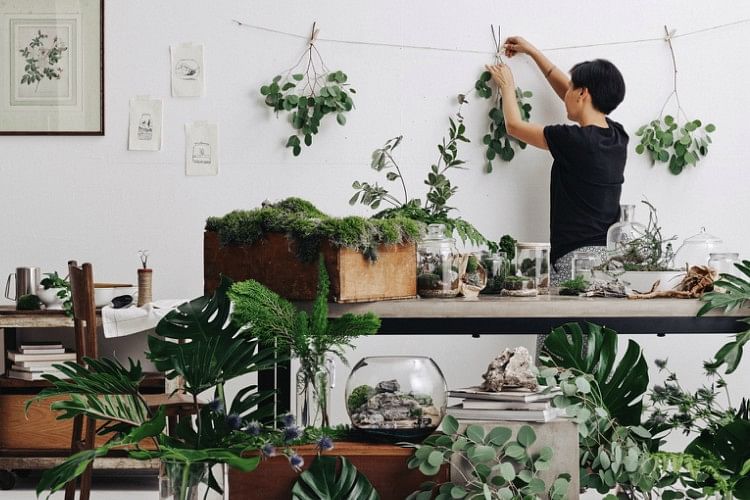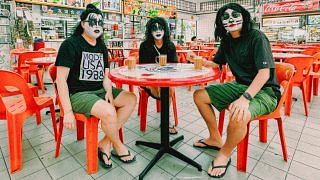This article was first published in March 2018.
Maranta, Monstera and Sansevieria. These words might sound like spells straight out of a Harry Potter novel. But in reality, they are some of the hottest plant names in the burgeoning green movement of homeowners cultivating indoor plants.
In the past year, the trend of growing small-scale trees, bushes and succulents inside the home – and sharing their images on social media – have turned Instagram and Pinterest into a breeding ground of truly photogenic greenery. For context: the hashtag #indoorjungle has amassed 115,509 posts on Instagram as we write this, compared to floral-related tags like #flowersofig which only hovers in the 88,000 region.
And the fashion pack, it seems, have been bitten by the bug too. For S/S ’18, Scott Studenberg and John Targon of American boho-luxe label Baja East emblazon the popular Monstera deliciosa, a native plant of Mexico that is well-loved for its verdant split leaves, on easy separates like jackets and tees.
The same plant appears as woodblock print-style motifs on a cerulean bomber jacket at No. 21. Earlier this week, the Colombian-born and Paris-based designer Daniela Bahamon of Maison Alma announced a new tie-up of coats and bags featuring botanical prints by high-end French textile maker Pierre Frey.
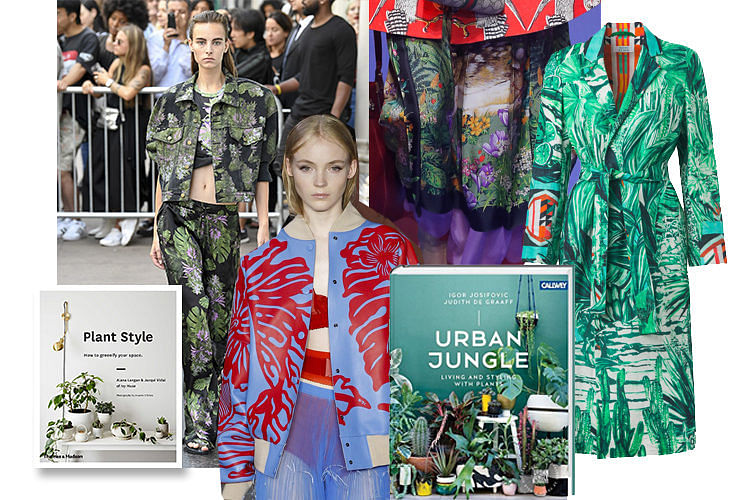
Among enthusiasts, though, the popularity of indoor plants has to do with the wellness benefits of having them in the home. According to experts, house plants enhance the quality of air in living spaces by producing oxygen and combating harmful chemicals such as formaldehyde which can be found in manufactured wood products like furniture and laminate flooring.
Then there is the major style factor of “trendy” species like the Pilea peperomioides (colloquially known as the Chinese money plant), the lush Marantaceae, and the ever-popular fiddle fig leaf (FYI: Celine boutiques have the most glorious kinds we know). Their exotic and amorphous appearances turn them into natural sculptures for interiors-obsessed aesthetes.
Plants with exotic features will dominate the narrative for the coming months. According to Pinterest, the number of saves by users for “patterned plants” — check out species like the rattlesnake calathea for #inspo — have gone up by 533 per cent in 2017 from the year before. So how do you make sense of this blooming trend?
Thankfully dozens of Instagram accounts and hashtags, like #jungalowstyle, dedicated to the movement have sprouted in the last two years for rookies to glean from for inspiration. One superstar in the field is Urban Jungle Blog, whose Instagram account, @urbanjungleblog, counts more than 590, 000 followers. It’s run by friends Igor Josifovic and Judith de Graaf who collates some of the most beautiful shots of the indoor plants around the world on their feed — think of them as the Scott Schumans of this community.
In 2016, the enterprising duo turned their social media obsession into a tome called Urban Jungle: Living and Styling with Plants which contains styling ideas and profiles of five homeowners and plant-philes in Europe. To date, the book has spun off editions in five languages, with the latest one in Czech launched in September last year.
Indeed, the popularity of indoor plant books have gone up. Bras Basah institution Basheer Graphics has sold out its Urban Jungle stocks, with a new shipment planned in the next week or so, according to a staff member there. Other titles like Plant Style: How to Greenify Your Space, which debuted last year are also best-sellers for the store.
In the next few pages, we meet several Singaporeans who have taken this lifestyle to a whole new level with their Insta-perfect plant shots. P.S: If some of their photos and names seem familiar, that’s because you might have seen their posts on Urban Jungle.

Who: James Ip, a Mauritius-born self-confessed plant addict and IT application services manager.
Follow him at: @jamesipy. His followers (they number over 14,600) are treated to a visual feast of the leafy interiors of his boho-chic home. If everything seems “wild and unruly”, that’s all part of his au naturel approach to planting. You might also notice how sunlight often bathes his images. He explains: “I particularly favour images of sunlight streaming through the leaves of my plants; it’s close to what the Japanese call komorebi.” The latter literally means sunshine filtering through the leaves of a tree.
How it all started: “I’ve always loved and have been growing plants since my childhood days. Growing up in Mauritius, I had the perfect environment for growing a number of plants, including my favourite ferns. I love surrounding myself with greenery, be it at home or the outdoors. I must admit that in the past years, I’ve been influenced by Instagram and jumped on the indoor plant bandwagon.”
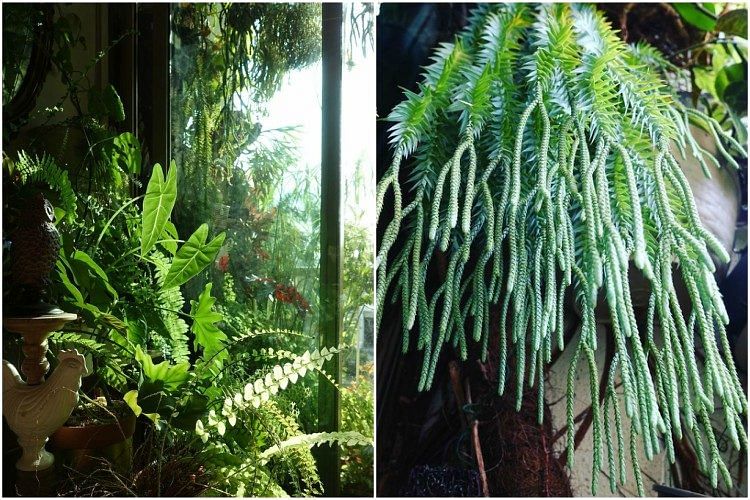
The plant count: “I never actually counted, but it’d probably be about 150 and more if I include the succulents.”
The special/exotic plants species he grows: “The Huperzias or tassel ferns can be perceived as exotic with the way they dangle and create a natural living curtain. The shingling plants like Rhaphidophora cryptantha and Monstera dubia tend to be impressive as well. A fully grown Platycerium (staghorn fern) never fails to make an impression too. The iridescent blue Selaginella willdenowii has many fans on IG as well.”
Most extreme thing he’s done for this hobby: “I tried to squeeze a visit to the (famous) Shinjuku Gyoen greenhouse and some plant shops on the last day of my trip to Japan last June. I narrowly missed my transfer shuttle to Narita and almost had to run after the bus. Not to mention that I spent a bomb on cab fare.”
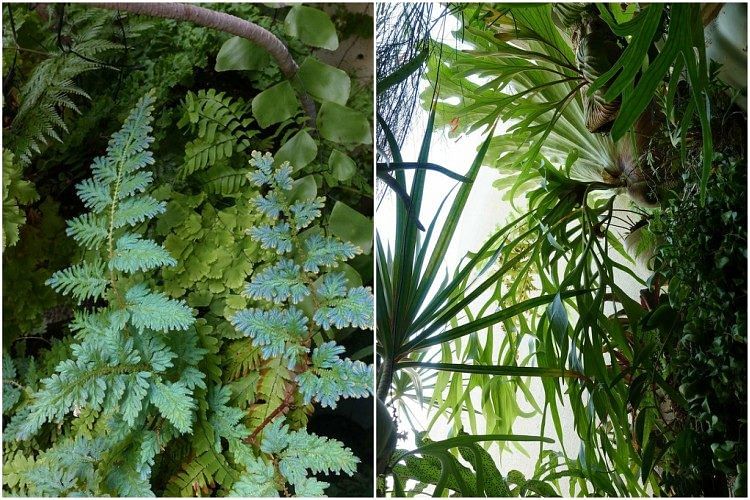
On whether this is an expensive hobby: “It can be, but I don’t consider myself a plant collector or grow anything expensive. Maybe it’s because I tend to buy juvenile plants and enjoy watching them grow and gradually fill up my living space, rather than buying full-grown ones. Most of the plants I’ve bought cost me less than an Uber ride to the office.”
Most photogenic plant: “It would have to be the staghorn fern I grow on the balcony; it’s a Platycerium alcicorne (Madagascar form). It has everything I like in a plant: great colour, shape, and texture. I
even use it as my phone wallpaper.”
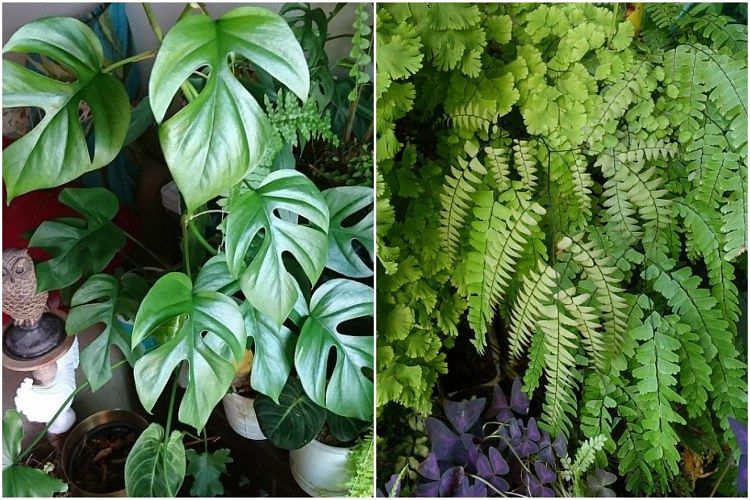
One good tip for a newbie: “Besides the cliche ‘Start small and don’t be afraid to experiment’, I’m gonna share a shortcut: Follow (Toronto-based business analyst and indoor plant guru Darryl Cheng) @houseplantjournal on Instagram. I find he gives simple easy-to-understand tips about plant care.”
The next trending plant on his radar: “It has to be the Rhaphidophora tetrasperma. It’s perfect for indoors and smaller spaces and grows easily. It is sometimes called a mini Monstera as it looks like a miniature version of the ubiquitous plant that Instagram can’t get enough of.”
The secret to a green thumb: “I’m realistic about what can grow in my home. For instance, the limiting factor is almost always the lighting. Lighting will determine how well and fast a plant grows and how much water it needs. A tip is to visit parks or the Botanic Gardens to see what can actually thrive in our climate, and under what conditions. Nurseries can be misleading, in that they sometimes bring in plants not suited to our climate. And of course, one can easily do some research online on how to care for the plant.”

Who: Chloe Cheng, a food and still-life photographer
Follow her at: @crazyplantaddict. She started the account — it now has more than 1,700 followers — as she suspects flooding her personal Instagram with plant pics may be annoying for her unappreciative friends Plus, “my husband is also not a plant lover as it reminds him too much of salads.” Those who want ideas on how to style greenery in their homes should also look at the editorial-worthy images that Cheng posts.
How it all started: “My passion for houseplants started when my husband and myself moved into our resale flat in Ubi about a year ago. We love all things home and decor and I was so inspired by many beautiful images of interiors graced with greenery on Pinterest that I decided to give it a go too.”
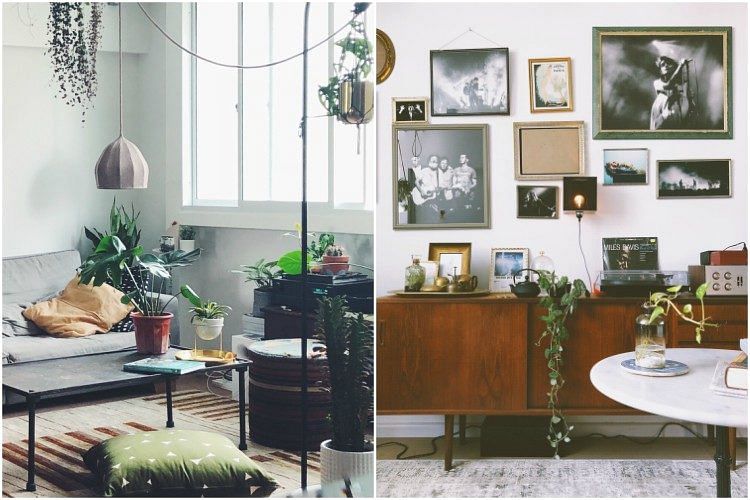
The plant count: “I did a very loose count and I think I have about 70 plus houseplants, not counting the propagated baby plants and those in my photography studio.”
The special/exotic plants species she grows: “I’m not really into expensive or exotic plants because work can get really busy and we do travel quite a bit. It is the saddest thing to come home and find your special plant dying (it has happened before). It is also really difficult to name my favourite house plant as there are just too many beloved ones. Though, recently, I am looking to expand my collection of Philodendrons and Hoyas. I have a decent collection of Sansevierias as well..”
Most extreme thing she’s done for this hobby: “I get withdrawal symptoms if I don’t have any plant-related activity for more than a week. Once, I went overboard a wee bit with my plant purchases so I placed the new plants outside the house and slowly introduced them to the home so my husband won’t get a shock.”
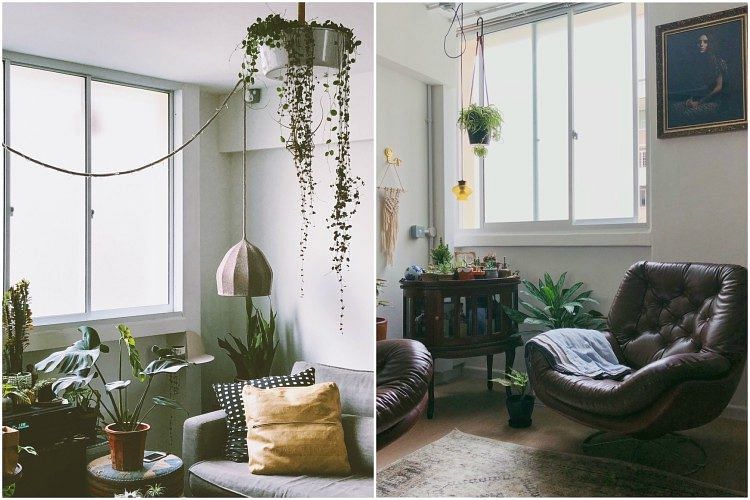
On whether this is an expensive hobby: “Rearing plants can be expensive if you are into having a rare and exotic collection. Nice pots can be hard to find and rather pricey too. My most expensive plants to date cost $50 for a huge cactus; nothing more than $40 for a small- to medium-sized leafy plant. Mature cacti can be really pricey as they take a very long time to grow. Everybody’s appetite for houseplant costs is different. I just rather not spend too much on one plant as they may die prematurely.”
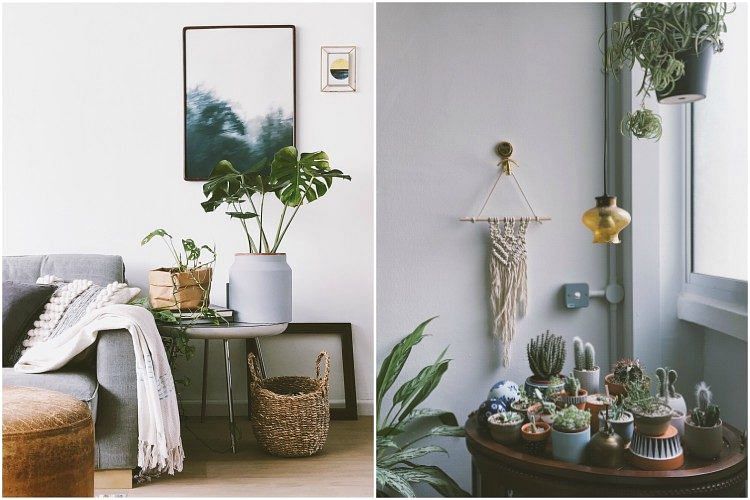
The next trending plant on her radar: “Plant trends come and go really fast. Sometimes the hype can last only for about a week or two on Instagram. So I prefer to stick to plants I personally love, not just because they are “in”. Also, as Singapore is slower in terms of bringing in the trending plants, the hype may have gone down by the time they arrive in the market here. However, I do think some old-fashioned plants may be making a comeback with the younger households like the Aspidistra (cast-iron plant) and the Chamaedorea elegans (parlour palm) for their fuss-free maintenance.”
The secret to a green thumb: “I think everyone can be proud owners of indoor plants as long as they are not afraid to try it. I’ve never really shown interests in plants before we bought our flat so this is still a relatively new hobby for me, and I have much to learn. My secret to being a happy plant-lover is that I’m realistic and I understand that plants may die even if I give it the correct care. They are living things and the key is to enjoy them while they are with you.”
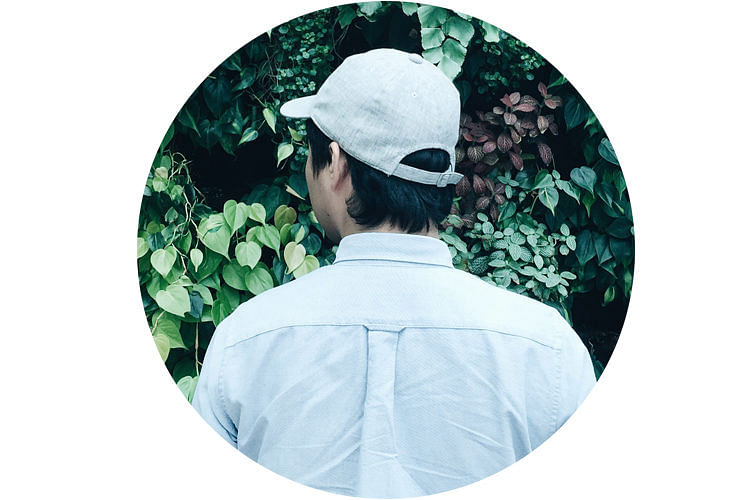
Who: Anton Javier, a media professional.
Follow him at: @alphabeticalife. The account, which has over 13,700 followers, is made for those who want an up-close and at times educational look at a plant. “Viewers can learn a little more about the particular cultivar or species should they decide to grow one as well,” he says.
How it all started: “It started three years ago when I moved to a new flat and had an empty canvas to work with. To add a little bit of life to the place, I bought a few potted plants and put them in various corners. I told myself that, ‘If these survive a month, I’ll add a few more’. They died, of course, but that didn’t stop me from buying more. It was all downhill from there.”
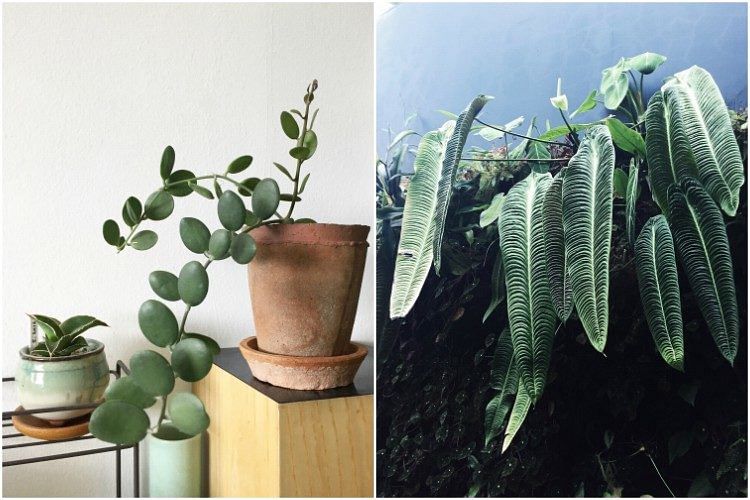
The plant count: “This regularly changes, but probably almost 200?”
The special/exotic plants species he grows: “My collection mainly comprises of plants from the Araceae family like philodendrons, anthuriums, and alocasias, as well as an increasing number of begonias. They’re not really exotic or hard to find in Singapore — you just need to know where to find them, what exactly it is you’re looking for, and to know the right people.”
Most extreme thing he’s done for this hobby: “Two years ago, I walked around Marina Bay Sands carrying a Philodendron gloriosum that was probably as tall as me. I’ve watched a movie with friends with a newly purchased plant on my lap. I planned overseas trips around visiting plant boutiques, nurseries, and botanic gardens. If you ask people who know me well, they’ll probably tell you more ridiculous things I’ve done.”
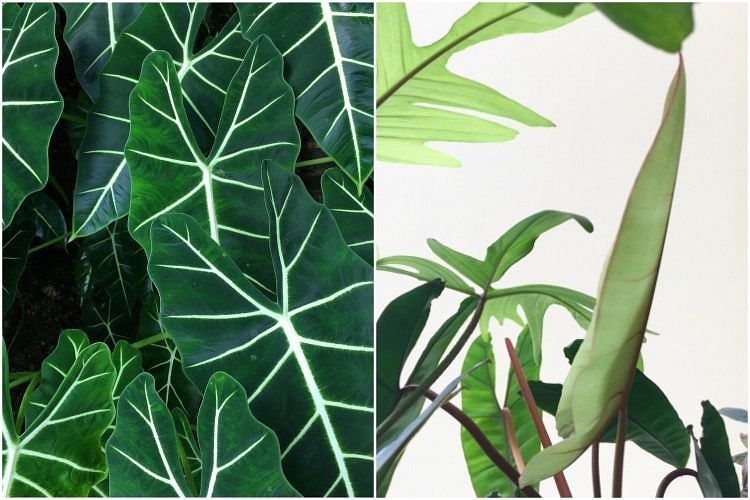
On whether this is an expensive hobby: “It can be because it’s quite addictive. Certain plants I collect can be a little pricier because they’re not as common. I’m not really sure how much my collection is worth and I don’t think I want to know.”
Most photogenic plant: “The Pilea peperomioides is a very popular plant because it’s so photogenic (among other things). People love it for its round, pancake-shaped leaves, its symmetrical growth pattern, and compact size that perfectly fits a variety of decorative pots and planters.”
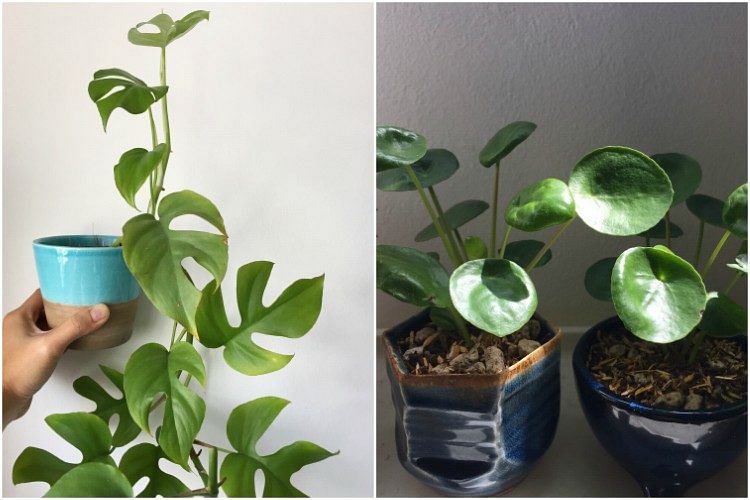
One good tip for a newbie: “It’s not a one-one-size-fits-all hobby. And just because it looks pretty on Instagram or Pinterest doesn’t mean it will work for you too. So I would say study the conditions you have at home: Do you live in an apartment? A house with a garden? How much light and humidity do you get? How’s the air circulation like? You need to know these things before seriously committing to growing and collecting plants. If you buy a whole bunch of plants and the conditions you have are wrong, sadly, they won’t thrive and might even die.”
The next trending plant on his radar: “I think people are generally getting into more foliage plants, as opposed to the flowering ones or cacti and succulents. As long as its big, leafy, and dramatic, city folks will appreciate it for the rich, jungly look it can instantly offer. They’re definitely more low maintenance as well, which adds to the appeal.”
The secret to a green thumb: “I don’t think there’s a secret nor is there anyone born with a green or black thumb. At the end of the day, it’s all about doing your research and studying up on the proper care that the plants need. At the same time, plants are living things that surprisingly, have personalities of their own. So if you take the time to slow down and observe them closely, you’ll figure out what they like or don’t like. With that, keeping them alive and happy will come naturally.”
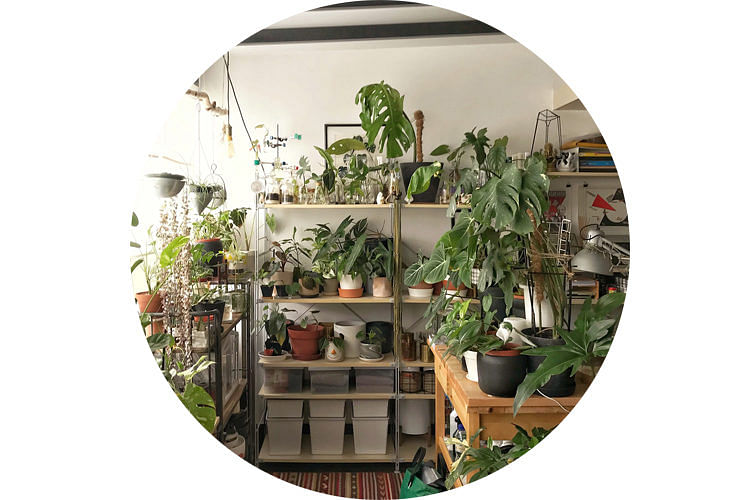
Who: A very private husband-and-wife duo (explains the profile picture) who prefers to be known as just Dillon and Fiona. They describe themselves as “plant nerds [who]… enjoy the hybrid between design and greens, and are extremely curious about things we cannot control.”
Follow them at: @myemptybedroom, which has over 5,000 followers as we write this. If you like Instagram posts with witty captions and a good story, then this two are cut out for you.
How it all began: “Nature has its own way of telling you ‘do not disturb I am doing my thing’. We found it hard to control our little nature, and that’s where we realised some things are better left undefined. We found the affinity to these questions in botany. The natural cycle of life is apparent in our hobby; old leaves will die; predators will appear if there is food; there will be beneficial bugs; and so on. There’s simply too much to learn and understand. However, the kind of love and care is very different too. You’ve got to understand the plant thoroughly. It’s not going to respond to you like a baby or a pet, you need time to observe its behaviour and this cultivated a special kind of patience. Show too much care and love and it will leave you, permanently.”
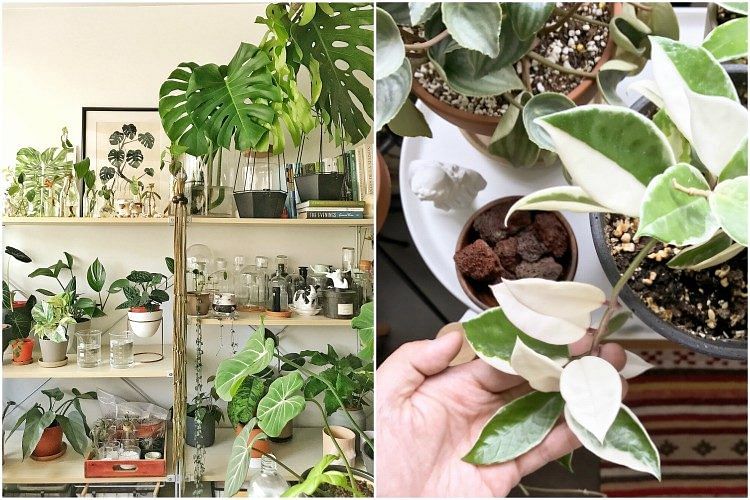
The plant count: “Somewhere in the region with three digits — we stopped counting.”
The special/exotic plants species they grow: “This obsession began with the Philodendron ‘White Knight’. It was one of our first variegated plants, and that started the ball rolling in collecting weird stuff. The Aglaonema pictum ‘Tricolour’ is another that we prize a lot. Its rarity here is our pride; not many people here own one. I recall being one of the first who has a massive Pilea peperomioides too. Thankfully it’s now readily available here. Of course, the variegated Monstera deliciosa is a fan favourite. The spotted ‘Thai Constellation’ is one of our first plants too and has stuck with us ever since.”
Most extreme thing they’ve done for this hobby: “Sneaking out of the office during lunch to visit the nurseries and planning overseas plant trips. Oh dear, our lives have changed.”
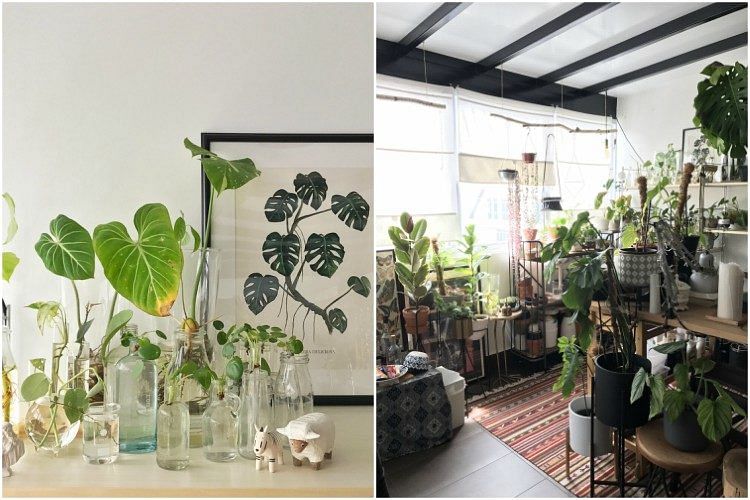
On whether this is an expensive hobby: “The most expensive lesson is patience and that costs more than the hobby. To answer the question, I wouldn’t sell my entire collection for a five-digit sum.”
Most photogenic plant: “We really like the Philodendron gloriosum. It’s not hard to guess from its name. The veins, in contrast to the entire foliage, are well defined. There’s a difference between awe, sublime and beautiful; this plant has all of those attributes.”
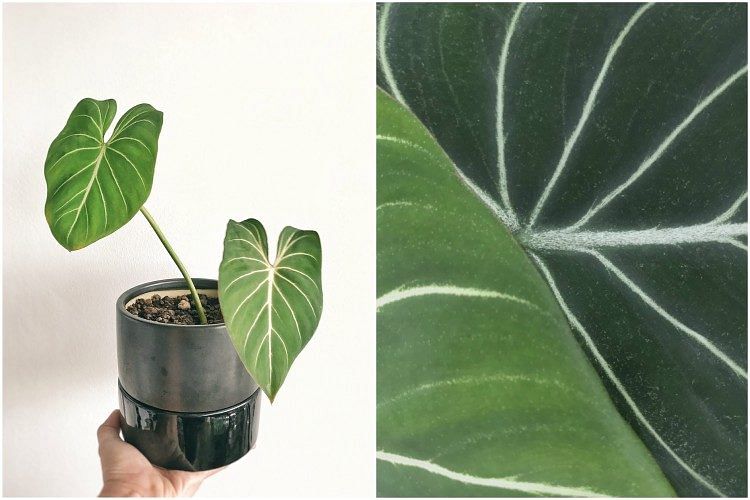
One good tip for a newbie: “Do your homework. Understand the plant you’re buying before adopting it. Your home is not a jungle, it does not belong there. Understand your environment and the plant’s needs. Repeat.”
The next trending plant on their radar: “In our opinion, it’ll very likely be the Monstera deliciosa. It’s all over the place now and in almost every household, just not widely documented as a ‘trendy plant’. Maybe, not yet. It’s majestic wide leaves are an indication of its maturity and age.”
The secret to a green thumb: “Do your homework.”

Who: Diane Lim, a researcher.
Follow her at: @twogreensquarefeet. Her over 1,300 followers would know her for her feed of lush foliage, which she describes as “part logbook of the plants, and part journal for interesting plants I’ve encountered around Singapore which I try to identify and learn more about”. There are also snapshots of botanic gardens, parks and street gardens from her travels. Lim plans to expand her repertoire by growing edible plants soon.
How it all started: “I signed up for a terrarium and container planting workshop organised by Singapore
Botanic Gardens in 2015. At that time, I was intrigued by the idea of a self-sustaining terrarium system and hoped to learn more about it. I ended up learning so much more about growing plants — light levels, watering, soil conditions, humidity — and was eager to put my newfound knowledge to practice.”
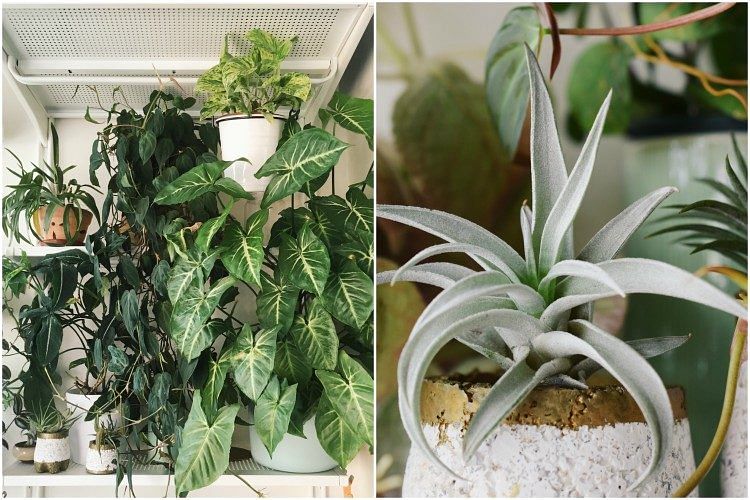
Total plant count: “25, if we’re only counting the ones in pots. The number is closer to 30 if you count the ones being propagated in jars and bottles.”
The special/exotic plants species she grows: “Begonia Maurice Amey — a species of cane begonia I got as a cutting from Gardeners’ Day Out event at the HortPark. Although they’re not a rare garden plant, they’re not easily found in nurseries, which seem to stock more of the Begonia rex varieties.”
Most extreme thing she’s done for this hobby: “When I first learned about World Farm nursery on Bah Soon Pah Road, I trekked down on public transport from my place in Clementi to explore their extensive selection of plants and gardening supplies.”
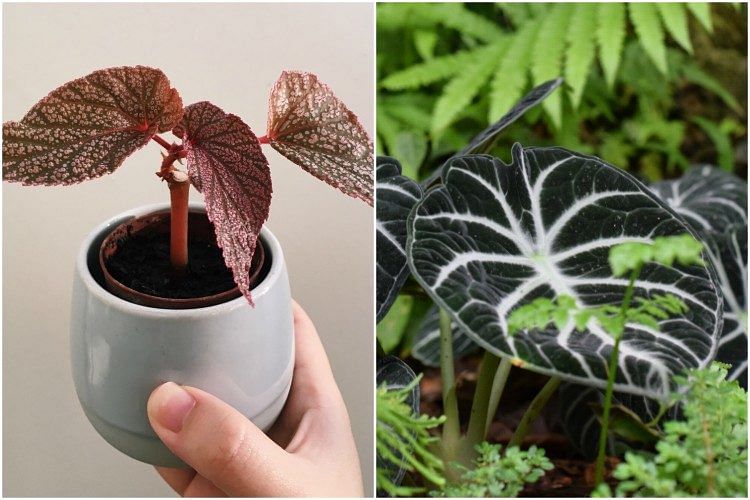
On whether this is an expensive hobby: “So far, I’ve spent under $200. I’ve steered away from rare and exotic specimens. Most of my plants were purchased as small pots from nurseries or rooted cuttings from other gardeners at Gardeners’ Day Out.”
Most photogenic plant: “The Alocasia reginula or Black Velvet. I’ve a soft spot for velvety leaves. In addition to textured leaves, the plant has light veins set against an almost-black leaf blade, making it an easy winner for me.”
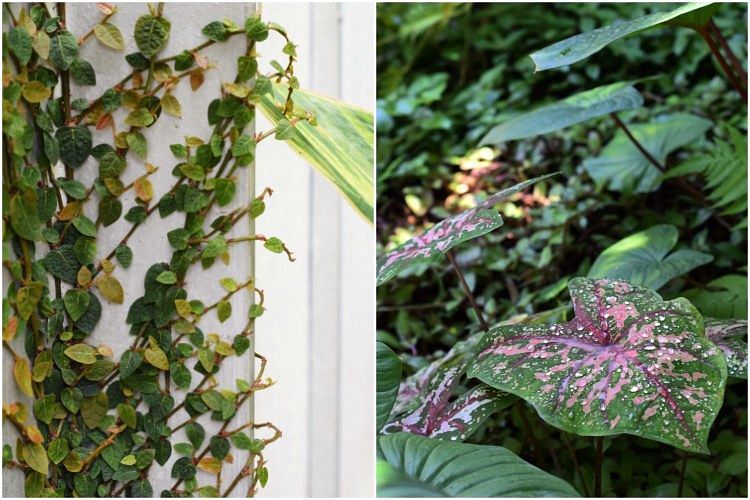
One good tip for a newbie: “Start by figuring out how bright your plant-growing space is, then get plants which are suitable for those lighting conditions. Trying to force a plant to survive under unsuitable lighting conditions has never ended well for me.”
The next trending plant on her radar: “Pilea libanensis (often sold as Pilea glauca). It has dainty blue-green leaves and reddish trailing stems. It would look great in a hanging pot or trailing down a shelf,
making it perfect for greening small spaces in apartments..”
The secret to a green thumb: “I’m not sure I would describe myself as a green thumb as I’ve killed my share of plants along the way. But trying to figure out what didn’t work (which is usually insufficient light, overwatering or underwatering, in that order) has helped me gain confidence to try different plants and keep more of them alive.”
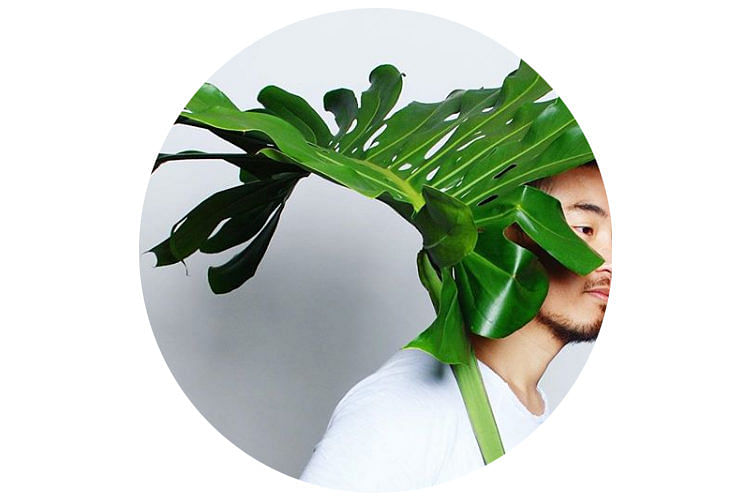
Who: Tyco Tat, a Toronto native who’s been living in +65 for the past six years. A product designer by training, he works at a bank here, dealing with experience design, research, and design strategy.
Follow him at: @greenvertluk, where he shows off his take on what a modern-day Hanging Gardens of Babylon looks like to his more than 7,400 followers. He says: “My approach is to share what brings a smile to my face, be it a leaf, a quirky seedling, or a collection of my favourite plants in the cosiest corners of my living space.”
How it all started: “My love of plants was instilled in me by my parents and my grandmother. I spent many summers savouring the warm air and hot sun toiling away in our modest backyard garden, where you could find an array of vegetables, herbs, flowering shrubs, and fruit trees. Growing up, some of my fondest memories could be traced back to the times we spent as a family soaking up the summer rays, enjoying, literally, the fruits of our labour.”
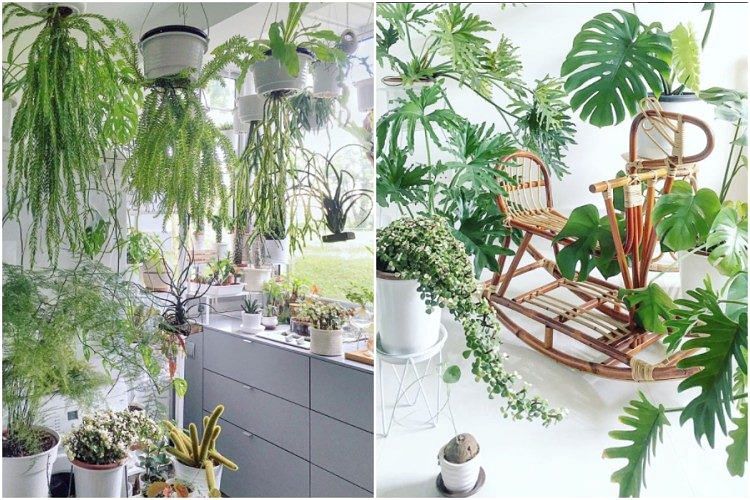
Total plant count: “I’ve never actually counted them all. The more important thing beyond numbers is that I have time to attend to them. It’s easy to get carried away growing a plant collection without realising the mounting responsibility that comes with caring for them.”
The special/exotic plants species he grows: “All my plants come from local nurseries and neighbourhood markets, so I suppose there’s nothing unique or especially exotic about them in the sense that they are easily found in this climate. I don’t have any prized or rare plants — that would be too much stress.”
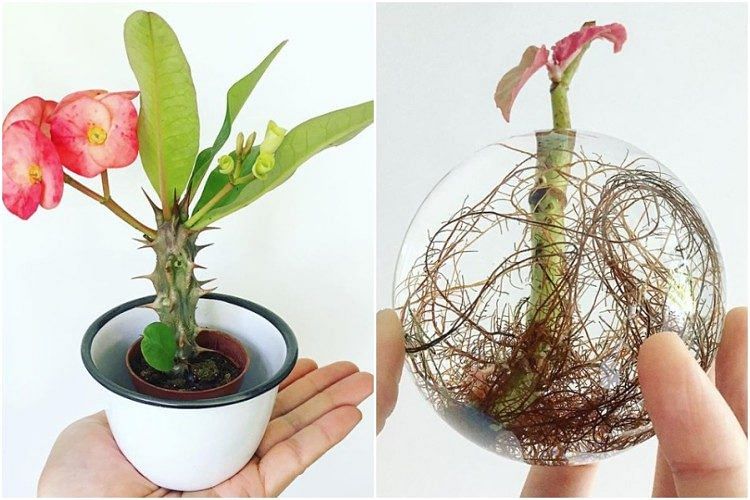
Most extreme thing he’s done for this hobby: “I love to hunt grass patches in public spaces and sidewalk cracks around my neighbourhood for anything that catches my eye and that I could possibly ‘adopt’ to take home with me. For example, small clovers and weeds like the Mimosa pudica have fallen victim to my kidnapping in the past.”
On whether this is an expensive hobby: “Like most hobbies, there is a spectrum of involvement spanning from fun to plain out of control. It can get costly, but a great way around spending too much is asking a friend for a cutting that you can propagate into a new plant. It takes time and patience, but it can be more rewarding to nurture a plant and a great way to grow your collection.”
Most photogenic plant: “I love the whimsical beauty of the Stephania pierrei Diels, and the contrast between its rough bark-like caudiciform stem and the delicate vines that sprout, bearing peltate leaves (these are round leaves that have a stem attaching from the underside).”
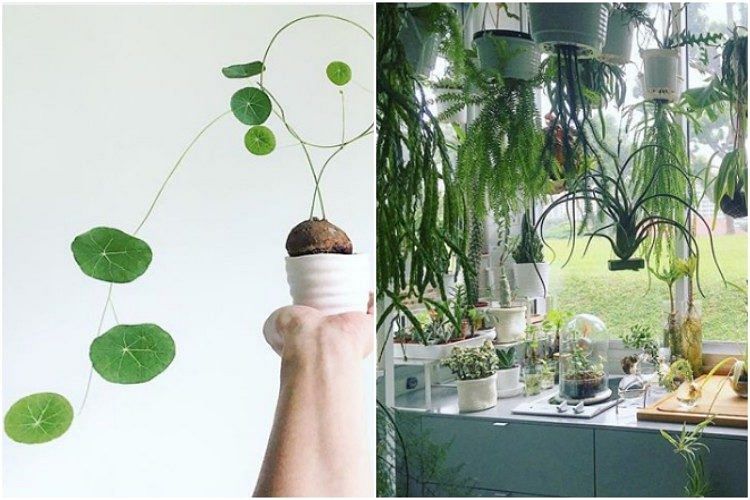
One good tip for a newbie: “Experiment with what catches your eye and what your home environment has to offer in terms of an appropriate environment where they can thrive. There’s also a plethora of information online that is helpful — from lists of “unkillable” plants to tips on plant care and pest control. There’s no shortage of advice or stories that you can find online to inspire and help you decide how to start growing your plant collection at home. There are also great online communities that you can tap into for advice and information, like the Singapore Urban Gardening facebook group.”
The next trending plant on his radar: “Anything that hangs. With the shrinking size of urban living spaces, the best way to avoid taking up precious floor space is to go vertical. It’s a great way to soften up hard, concrete-laden living spaces — and what’s not to love about a floating jungle?”
The secret to a green thumb: “There’s no big secret. Knowing what they need to survive and thrive is key (the basics like water, sun, nutrient-rich soil). The notion of the ‘right plant in the right place’ has so much truth behind it.”
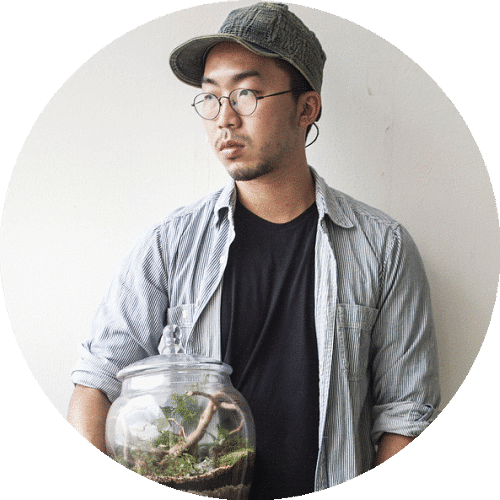
Who: Charles Loh, botanical artist and designer
Follow him at: @mossingarden, where his more than 32,000 followers are treated to his beautifully composed and artistic shots — often with an industrial feel. “I don’t really buy a plant just for a perfect shot but then again, who doesn’t want to look out for a perfect plant to adopt. I do like to look at exteriors, the outdoors, the interiors that compliment well with plants and also exotic, hard-to-find plants,” he says.
How it all started: Asa teenager, Loh was very much into collecting aquatic plants and that passion soon turned into collecting botanical plants as well.
Total plant count: In the figure of three digits, excluding propagated ones.
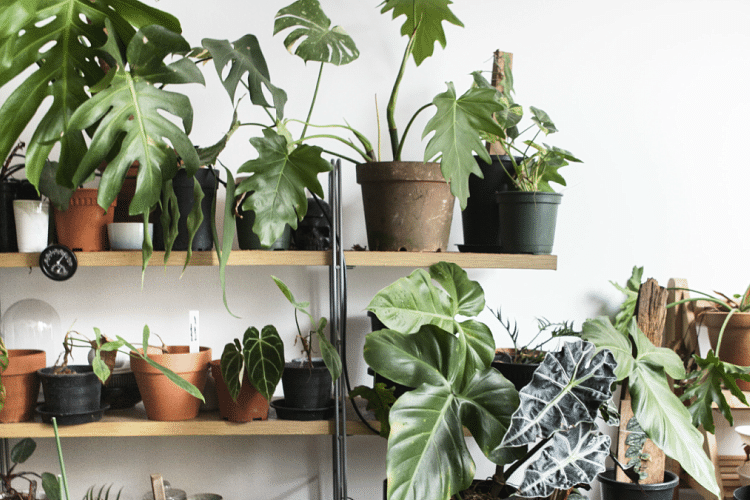
Most extreme thing he’s done for this hobby: “Once, I went from one end of Singapore to
the other end to get a Monstera deliciosa Just because I wanted one with really, really crazy aerial roots with interesting shapes.”
On whether this is an expensive hobby: “Plants can be an expensive hobby depending on how you put it. In any case, plants are still the cheapest living decor you can find for your home.”
Most photogenic plant: “Well, there are so many plants out there that are interesting but yet not photogenic. If I were to choose one that never goes out of style, it has to be Monstera deliciosa.”
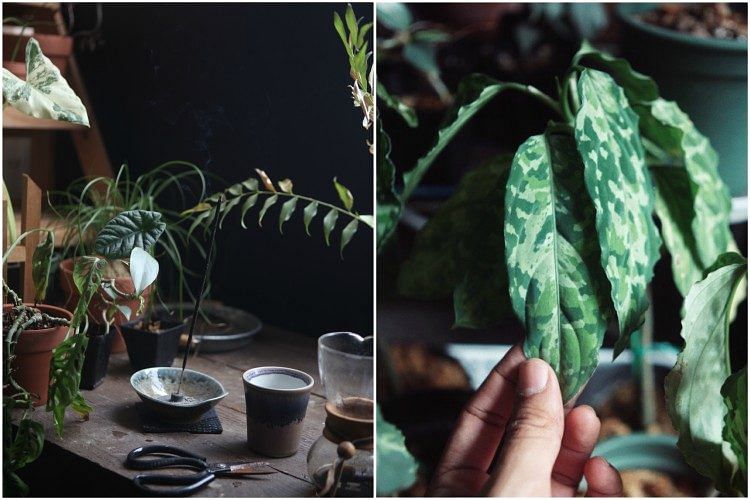
One good tip for a newbie: “For a start, check out on the plants you’re interested in. Do some research on how to care for them including the lightings needed. Then find a nice spot at home to place it in.”
The next trending plant on his radar: “It has to be Aglaonema pictum, or rare jewel orchids. Because it’s so hard to find.”
The secret to a green thumb: “Observation is key. Indoor plants are very prone to mealy bugs and
overwatering. Sometimes it’s not too good to care too much for your plants.”

Who: Albert Pang, director of a public relations agency specialising in fashion, luxury, beauty and lifestyle.
Follow him at: @_albertpang_, where he shares crisp images of his artful-looking plants with almost 2,000 followers. Nordic-philes should take note: The images which are shot in his apartment in Katong, marries a strong Scandinavian home design element with nature.
How it all started: “It started when I bought my apartment, which has a balcony that gets plenty of sun. Initially, I had no idea what to do with it. But I’ve always liked plants — I grew up in a home with a nice garden that my parents tended to on weekends. So I decided to decorate my balcony with some plants. And surprise surprise, I didn’t kill them. In fact, they were thriving.”
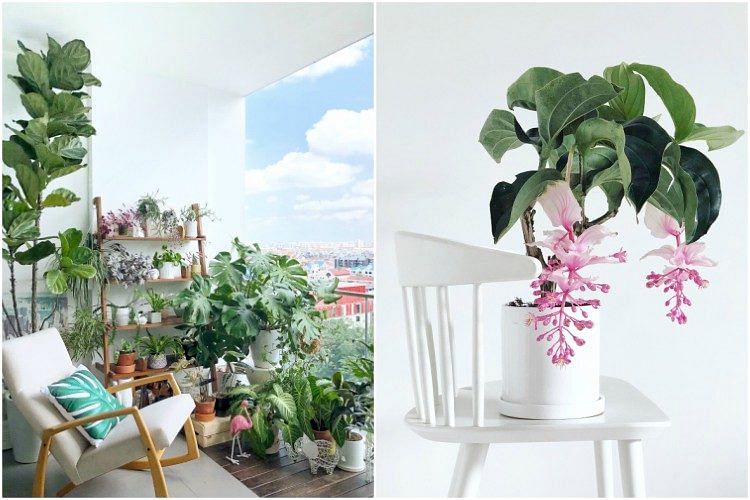
Total plant count: “60 and growing.”
The special/exotic plants species he grows: “Alocasia zebrina, Begonia maculata Wightii and Medinilla magnifica.”
Most extreme thing he’s done for this hobby: “I walked in minus 10 degrees Celsius weather in Seoul to find this plant shop only to discover that it was closed. So I waited for an hour for it to open and even though I fell sick after that, it was all worth it.”
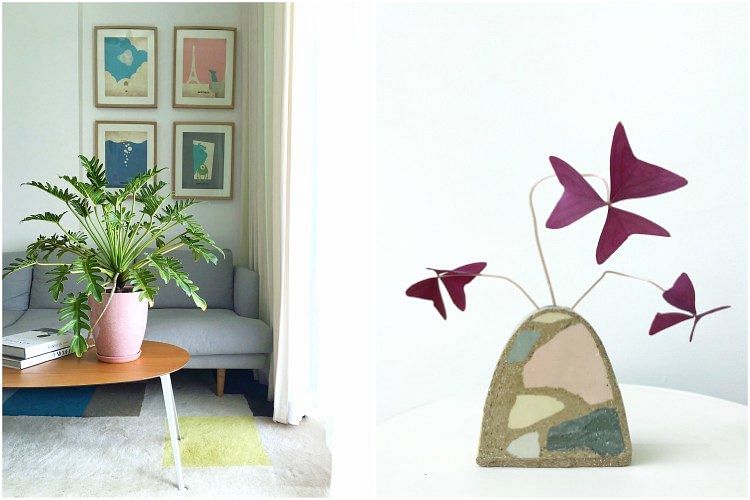
On whether this is an expensive hobby: “It can be if you like the rare and exotic ones, or large plants. I’ve spent about a thousand dollars on my plant collection — excluding the pots and accessories.”
Most photogenic plant: “Monstera deliciosa for its large, dramatic, and beautiful split leaves. P.S.: You’ll generally get more likes when you post a photo of the Monstera.”
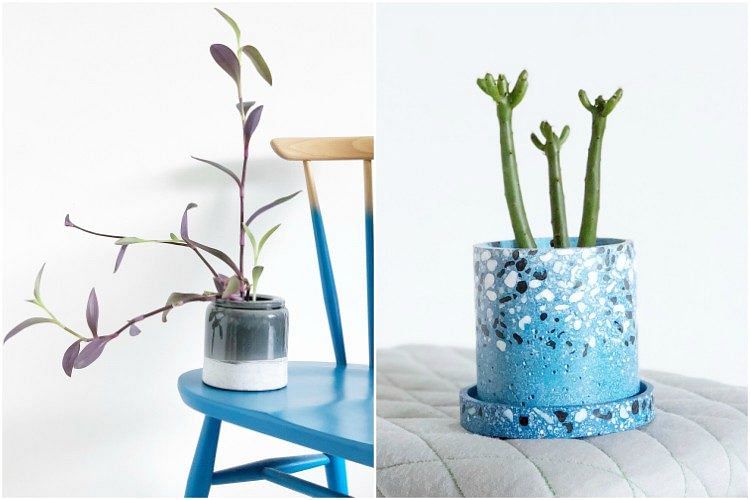
One good tip for a newbie: “Always start with the easy-care plants for beginners. There are many beautiful yet hardy plants such as Epipremnum aureum (money plant), Sansevieria (snake plant) and Chlorophytum comosum (spider plant).”
The next trending plant on his radar: “Pilea peperomioides because aren’t they just the cutest?”
The secret to a green thumb: “Interest. You can’t expect a green thumb from someone who has no interest in plants. You have got to be willing to get down and dirty and often times, it does get dirty.”
Like this? Watch how we spent a day with Singapore photographer Dionna Lee, 15 items from the JW Anderson for Uniqlo tie-up we predict will sell out fast, and a sneak peek at the upcoming Frida Kahlo exhibition at the V&A in June.



